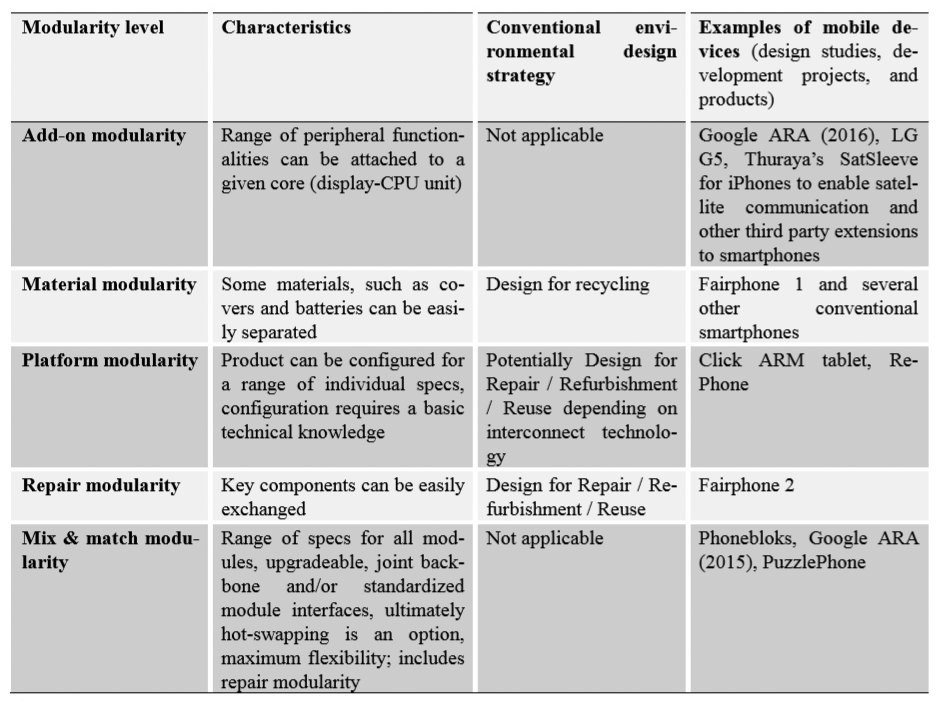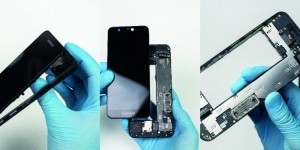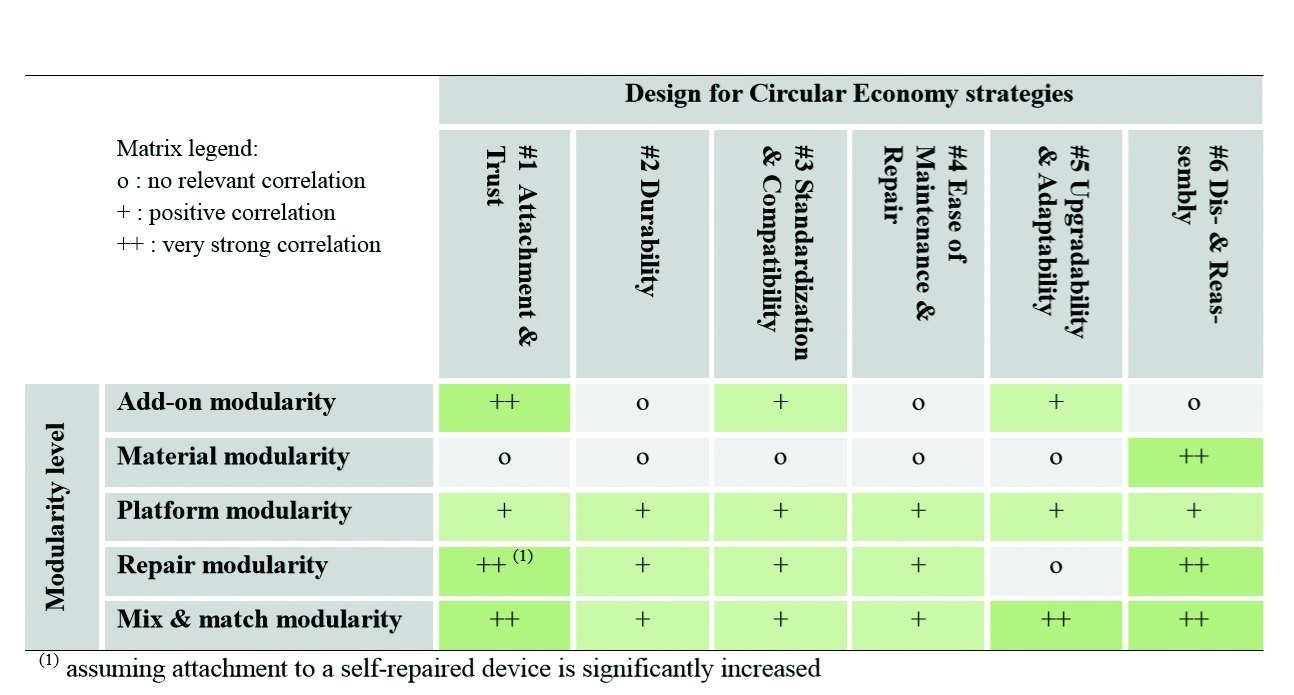The modularization of smartphones makes it possible to meet expectations regarding durable and sustainable products. The debate on this is currently gaining momentum: considerations about the environmental impact of smartphones are changing; environmental criteria such as longevity, durability, upgradability and reparability are becoming increasingly important.
Modularizing smartphones can meet expectations for durable and sustainable products. The discussion is currently gaining momentum: considerations about the environmental impact of smartphones are changing; environmental criteria such as longevity, durability, upgradeability and repairability are becoming increasingly important.
Tablets and smartphones are in constant use in everyday life and need to be up to date: technical performance, software compatibility and access to the latest functions are very important to the majority of users. Therefore, among the products that are regularly replaced, the fewest are actually affected by technical failures or other ageing and wear and tear impairments.
 Tab. 1: Definition of the different modularity levels
Tab. 1: Definition of the different modularity levels
If modularly designed end products are only used for as long as conventional phones, modular product design is not necessarily the most sustainable design option. Modularity inevitably also means material consumption - in some cases the product may need to be larger to accommodate all configuration options or the addition of anticipated future technologies. This needs to be balanced by longer use of individual devices and modules.
 Fig. 2: Fairphone generations 2 and 3 already rely on the ability to replace individual modules and thus keep the overall device alive longer and up-to-date as neededFroma circular economy perspective, modularity should be understood as a potential contribution to supporting resource efficiency, as it can enable longer active use. The modular smartphone is a concept with the potential to continuously maintain functionality: Parts of the device could be adapted or upgraded without having to replace the entire product. At the same time, modularity can also represent a conflict of objectives with other durability aspects such as water resistance and must therefore be weighed up.
Fig. 2: Fairphone generations 2 and 3 already rely on the ability to replace individual modules and thus keep the overall device alive longer and up-to-date as neededFroma circular economy perspective, modularity should be understood as a potential contribution to supporting resource efficiency, as it can enable longer active use. The modular smartphone is a concept with the potential to continuously maintain functionality: Parts of the device could be adapted or upgraded without having to replace the entire product. At the same time, modularity can also represent a conflict of objectives with other durability aspects such as water resistance and must therefore be weighed up.
The modules that make up a modular product are, by definition, structurally independent elements. These can be a mono-material back panel or sub-assemblies with defined interfaces, such as a removable battery. The next stage in the evolution of modular design could be a platform that enables manufacturers to deliver truly customized units.
You can look at modularity from different points of view. Two of them are explained in more detail here - they can be combined(Tab. 2). Firstly, it can be divided into a kind of environmental hierarchy:
- Add-on modularity
- Material modularity
- Platform modularity
- Repair modularity
- Mix-match modularity
Add-on modularity is mostly a pure expediency as it allows the user to connect a number of additional peripheral functions to a specific core (display CPU unit). Conventional environmental design strategies do not apply here, as the individual life expectancy of core parts does not change with the addition or removal of add-on modules.
The material modularity allows users to easily separate some components, such as covers and batteries. The Fairphone 1 and several other classic smartphones have already achieved this type of material modularity and are specifically designed with recycling in mind.
A product at the platform modularity level can be configured for a range of individual specifications. This configuration of smartphones requires basic technical knowledge and is potentially designed for repair, refurbishment or reuse.
The degree of repair modularity is also given with repairability, modernization and reuse. In this case, however, the key components are easy to replace. As is the case with the Fairphone 2 and 3(Fig. 2).
Mix-match modularity comprises repair modularity and also includes standardized module interfaces, which entails the risk of a significant rebound effect. It depends on the user whether the ability to replace modules actually helps to keep the device in operation or whether the user may replace individual modules much more frequently to keep up with the latest technological advances.
 Tab. 2: Matrix of modularity according to hierarchy levels and circular economy aspects
Tab. 2: Matrix of modularity according to hierarchy levels and circular economy aspects
Modularity in the concept of the circular economy
Modularity can also be viewed from the perspective of the circular economy, i.e. recovery and reuse. There are six defined product strategies (Bakker et al.) for circular economy models that can be implemented differently for different products and for which the modularity concept is applicable:
- Bonding and trust
- Durability and adaptability
- Standardization and compatibility
- Ease of maintenance and repair
- Disassembly and reassembly
Bonding and trust: This strategy is based on the relationship between user and object. Reasons for no longer using a product include changes to the product, such as the sound or scratches. The modularity of a product makes it unique and, above all, personal, which can strengthen the bond with a product. Affordability and the image of the brand also contribute to the loyalty factor. Open source, control over the software and operating system and the customization of functionalities and creation of modules also play a key role in the loyalty strategy. Trust is influenced by the belief in a long service life: the assumption of low product quality and a short service life leads to a lower willingness to repair.
Durability includes the technical aspect for optimal product reliability, which is aligned with economic and stylistic durability. Durability is about envisioning what happens to a product throughout its lifetime and creating mission profiles. Since additional interfaces in devices typically represent weak points in terms of reliability, this aspect tends to be used as an argument against modularity. Although the possibility of repair through modularity contributes to durability, repairability usually has no real influence on the service life: more performance or new service contracts, which often accompany new smartphones, are usually the main reasons for purchasing a new device.
Standardization and compatibility: The aspect of standardization relates primarily to hardware and software, while resource efficiency can be achieved through compatibility, e.g. through USB charging cables compatible for several generations of devices. Compatibility is the basis for mix and match and platform modularity. Because many modular smartphone concepts are only based on proprietary standards, there are hardly any initiatives to standardize interfaces between different smartphones. In order to involve third-party providers and develop customer-specific modules, the descriptions of special interfaces must be published for new business concepts.
Ease of maintenance and repair: This strategy requires both the manufacturer and service provider as well as the user to have solid knowledge of the parts that need to be maintained and repaired. An optimized service life can be achieved through easily replaceable parts. For the manufacturer, this design can be profitable if the business model focuses on services rather than selling a product.
Adaptability: Even with modular and circular economy-oriented design, functions should be guaranteed through the replacement of parts, in which the ability to 'upgrade' plays a major role. It must be possible to anticipate future technological developments. Users' expectations of a smartphone are increasing, which is why the performance of a smartphone should do the same.
Combining disassembly and reassembly adds an additional perspective to the design, as it requires non-destructive disassembly and the ability to reassemble the entire product from parts. Facilitating and speeding up the disassembly and reassembly process are key benefits of modular product design. Although manual disassembly is usually understood as the main end-of-life objective, disassembly as an eco-design measure targets the recycling process. Reassembly can also include reassembly with components from other products.
Modular design fits well into the concept of circular economy (see Tab. 1 and 2), even if material modularity is not perfect for circular economy. Add-on modularity has no obvious correlation with many of the strategies, while platform, repair and mix-match modularity correlate with (almost) all design strategies.
Modular electronics for recycling
The Fraunhofer Disassembly Study 2013 disassembled tablet computers and distinguished between two archetypes: Aluminum and plastic housings. The tablets with the plastic housing get their required stability from an internal magnesium frame. The approximately 200 million tablets sold worldwide contain around 5000 tons of high-quality circuit boards.
Although the recycling of tablets is a challenge, there are some promising design options for individual brands. A battery that can be removed from the back of the tablet is the best case in terms of modularity.
A look at the internal structure of a tablet shows that most of them are already arranged in modules. A similar assembly structure is also found in many smartphones, where the display, back shell, electronics and battery are clearly separate parts of the product, but are tightly connected by screws, clips, cables, connectors, glue, etc.
Extending the useful life of electronic products is the most important parameter for reducing environmental impact. Modularity can encourage users to change the current usage and consumption cycles. The combination of technical possibilities, an understanding of the environmental impact and a reflective approach to products can contribute to this. There will be no 'one-size-fits-all' solution that satisfies all user needs while reducing environmental damage. With a real assessment of use that influences the design and the assumption that the technical possibilities will be used as intended, the useful life should be sustainably influenced.
Literature and references:
https://www.tandfonline.com/doi/pdf/10.1080/21681015.2016.1172124
http://publica.fraunhofer.de/documents/N-255111.html
'Modular Products: Smartphone Design from a Circular Economy Perspective' (Lang, Nissen, Proske and Schischke) https://ieeexplore.ieee.org/document/7829810
'Decreasing obsolescence with modular smartphones? - An interdisciplinary perspective on lifescycles' (Proske and Jaeger-Erben) https://www.sciencedirect.com/science/article/abs/pii/S0959652619308078


